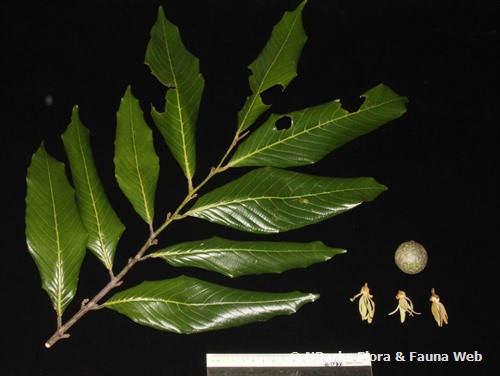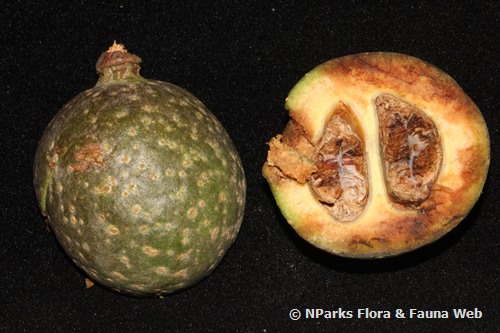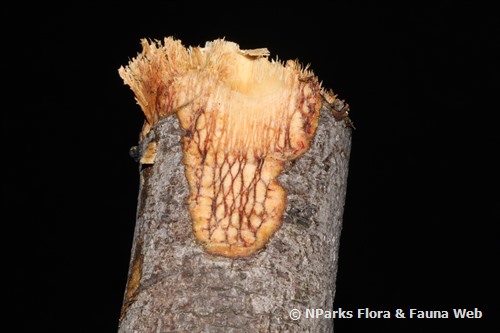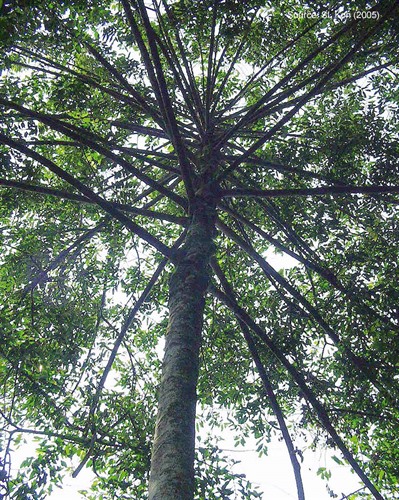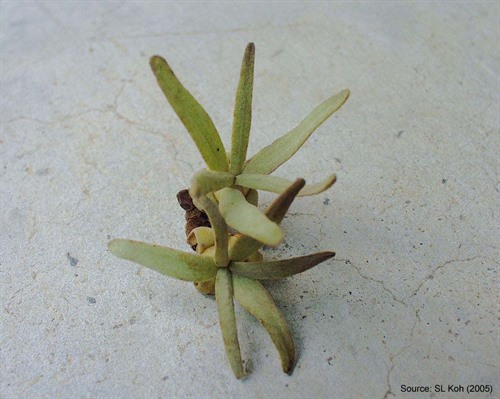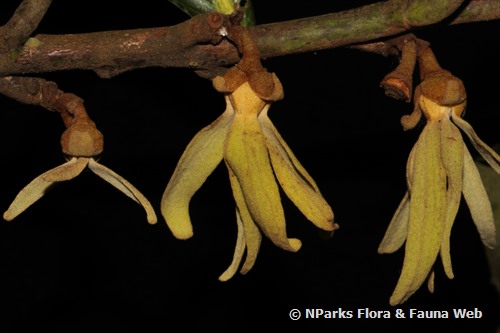
Name
Classifications and Characteristics
| Plant Division | Angiosperms (Flowering Seed Plants) |
|---|---|
| Plant Growth Form | Tree |
| Mode of Nutrition | Autotrophic |
| Maximum Height | 23 m |
Biogeography
| Native Distribution | Peninsular Malaysia and Singapore |
|---|---|
| Native Habitat | Terrestrial |
| Preferred Climate Zone | Tropical |
| Local Conservation Status | Native to Singapore (Critically Endangered (CR)) |
Description and Ethnobotany
| Growth Form | It is a tree up to 23 m tall. |
|---|---|
| Foliage | Its stalked, alternate leaves have leathery leaf blades that are oblong to oblong-lance-shaped, shiny green above, finely hairy below, and 14–28 by 5–7.5 cm. Its secondary veins are protruding below. |
| Flowers | Its flowers grow in clusters of 2–3, with greenish petals that are up to 1 cm long. |
| Fruit | Its fruit is stalkless and egg-shaped. Each fruit contains 4–6 large and flat seeds. |
| Habitat | It grows in forests and along roads. It occurs locally in Singapore Botanic Gardens. |
| Associated Fauna | Its flowers are insect-pollinated. |
| Etymology | Greek Cyathocalyx, cup-shaped calyx; Latin sumatranus, from Sumatra, referring to one locality in the natural distribution of this species |
Landscaping Features
| Landscape Uses | Parks & Gardens |
|---|
Fauna, Pollination and Dispersal
| Pollination Method(s) | Biotic (Fauna) |
|---|
Plant Care and Propagation
| Light Preference | Full Sun, Semi-Shade |
|---|---|
| Water Preference | Moderate Water |
| Plant Growth Rate | Moderate |
Foliar
| Mature Foliage Colour(s) | Green |
|---|---|
| Mature Foliage Texture(s) | Leathery |
Floral (Angiosperm)
| Flower Colour(s) | Green |
|---|
Image Repository
Others
| Master ID | 32910 |
|---|---|
| Species ID | 7324 |
| Flora Disclaimer | The information in this website has been compiled from reliable sources, such as reference works on medicinal plants. It is not a substitute for medical advice or treatment and NParks does not purport to provide any medical advice. Readers should always consult his/her physician before using or consuming a plant for medicinal purposes. |

